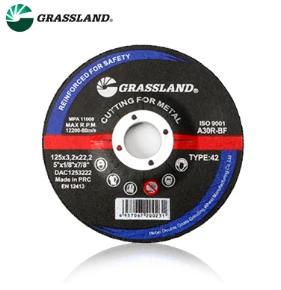

Before beginning, it's imperative to don protective gear — safety glasses, gloves, and ear protection — as the process generates noise and flying metal particles. Once situated, start your angle grinder and gently align the flap disc with the cutting edge of the blade. Maintain a consistent angle, ideally mirroring the original bevel of the blade, commonly around 30 degrees. Consistent strokes along the length of the blade may take several passes, depending on the blade's dullness and the grit size in use. This attention to detail not only sharpens but balances the blade, an often overlooked aspect that ensures even cutting and reduces stress on the mower’s engine. Implementing regular sharpening routines with a flap disc extends the lifespan of your mower blades and fosters a cleaner cut. This practice contributes to the health of the lawn by preventing the frayed, brown edges that often result from dull blades. Sharp blades cut cleanly, facilitating faster healing of the grass and reducing susceptibility to disease. Moreover, the efficiency gained by a sharp blade translates to reduced workload on the mower, improving fuel efficiency and operational longevity. Balancing the blade post-sharpening is another critical step. Use a blade balancer or a makeshift pivot point to ensure both sides of the blade maintain equal weight. An imbalanced blade can cause vibration, leading potentially to uneven cutting and unnecessary wear on the mower. Leveraging a flap disc for sharpening positions you as a knowledgeable and authoritative figure in lawn care, and underscores a commitment to precision and quality. Users who adopt this method benefit from enhanced mower performance, aesthetically appealing lawn outcomes, and a tangible extension in the life of their tools. With dedication to craftsmanship and proper techniques, the flap disc becomes an indispensable tool, blending expertise and efficiency for superior lawn maintenance.
Post time:Feb - 18 - 2025

















